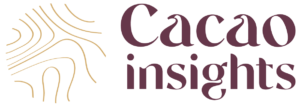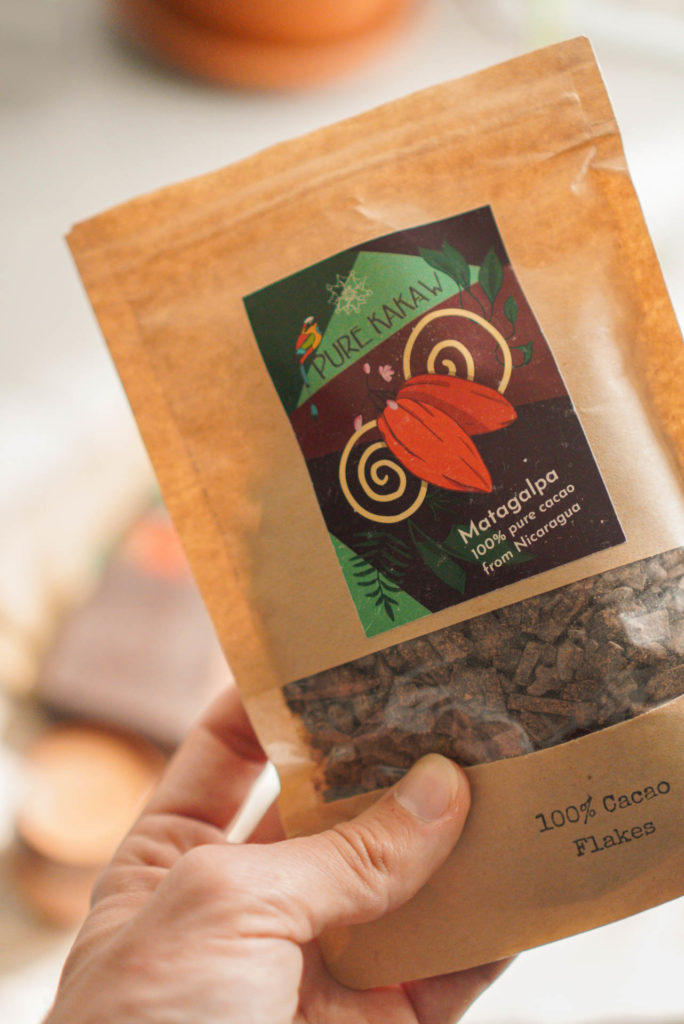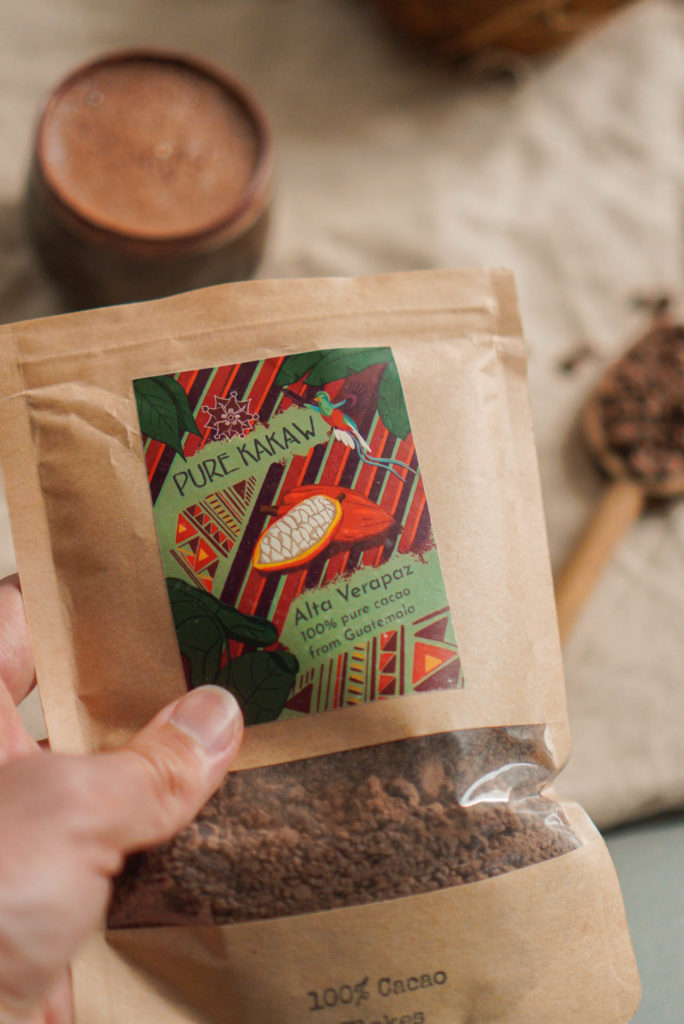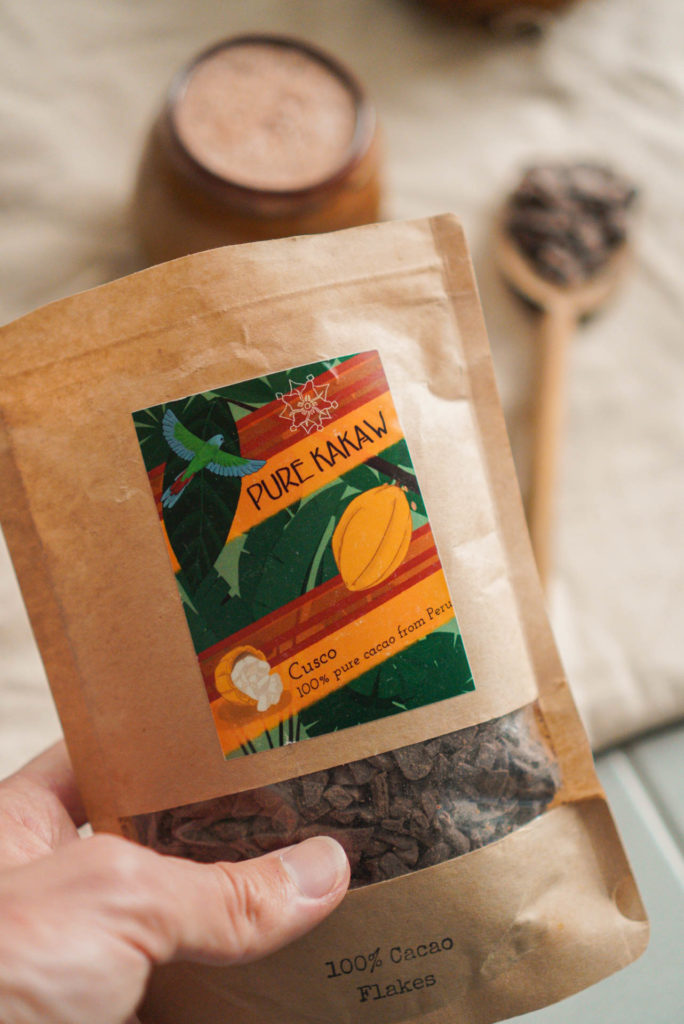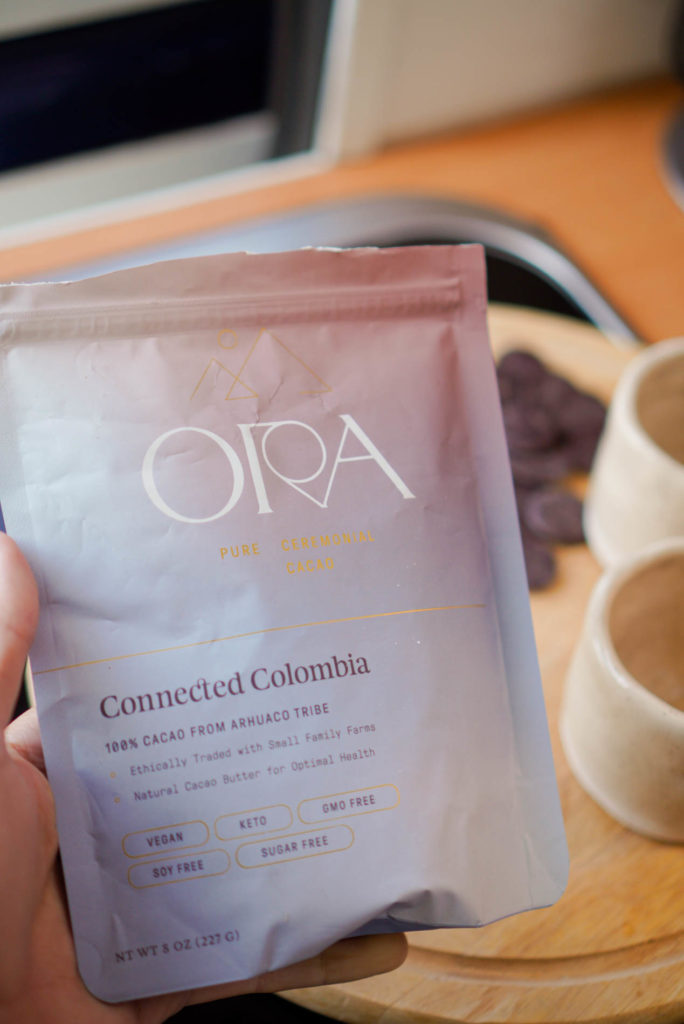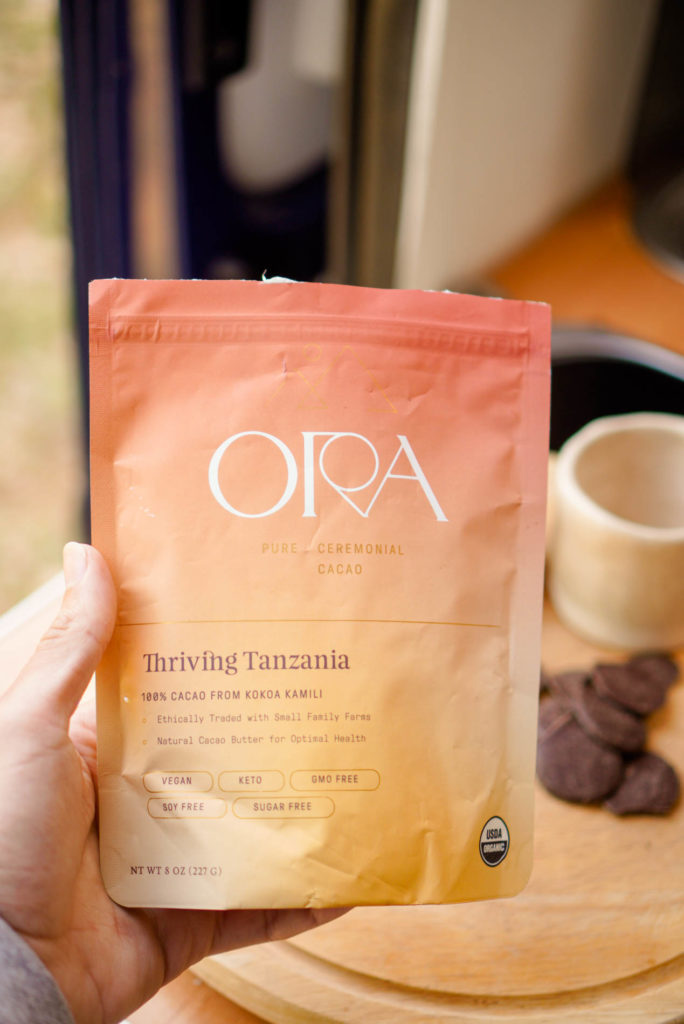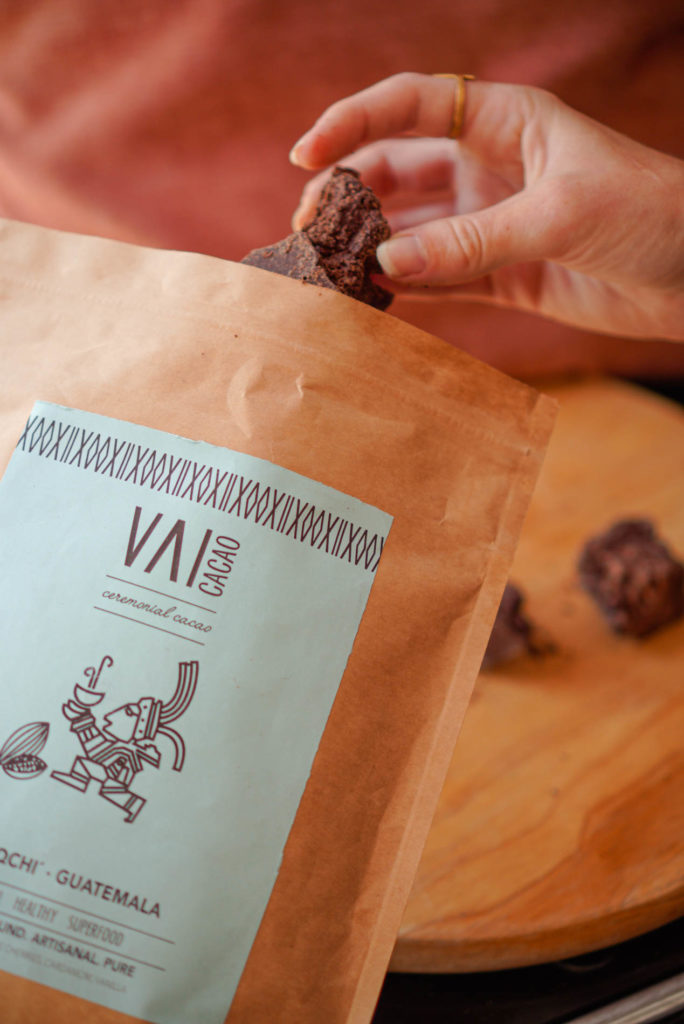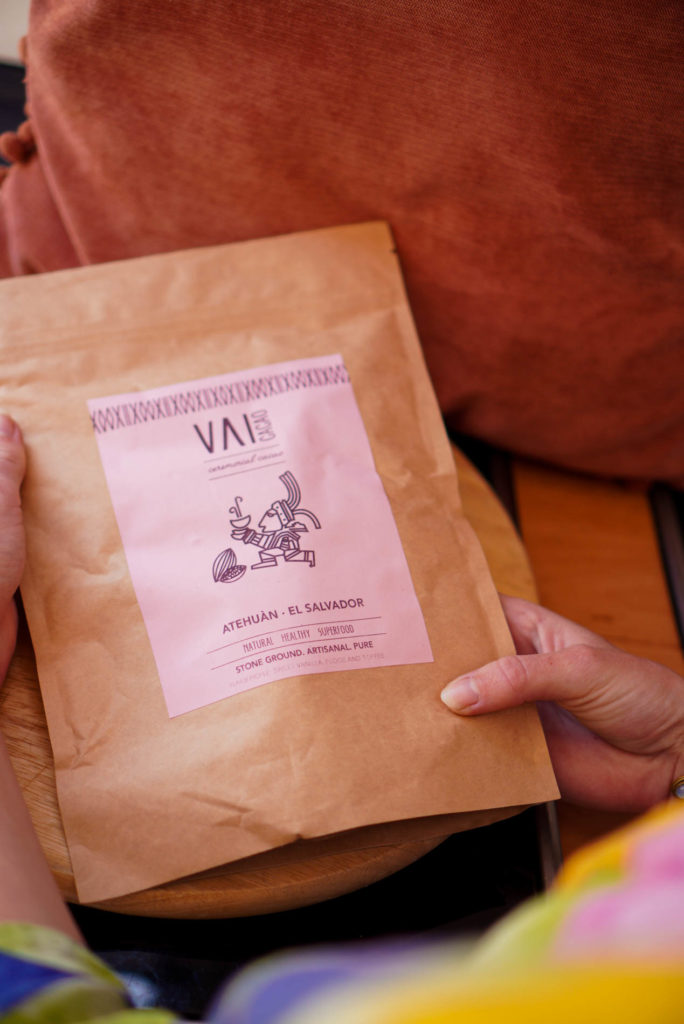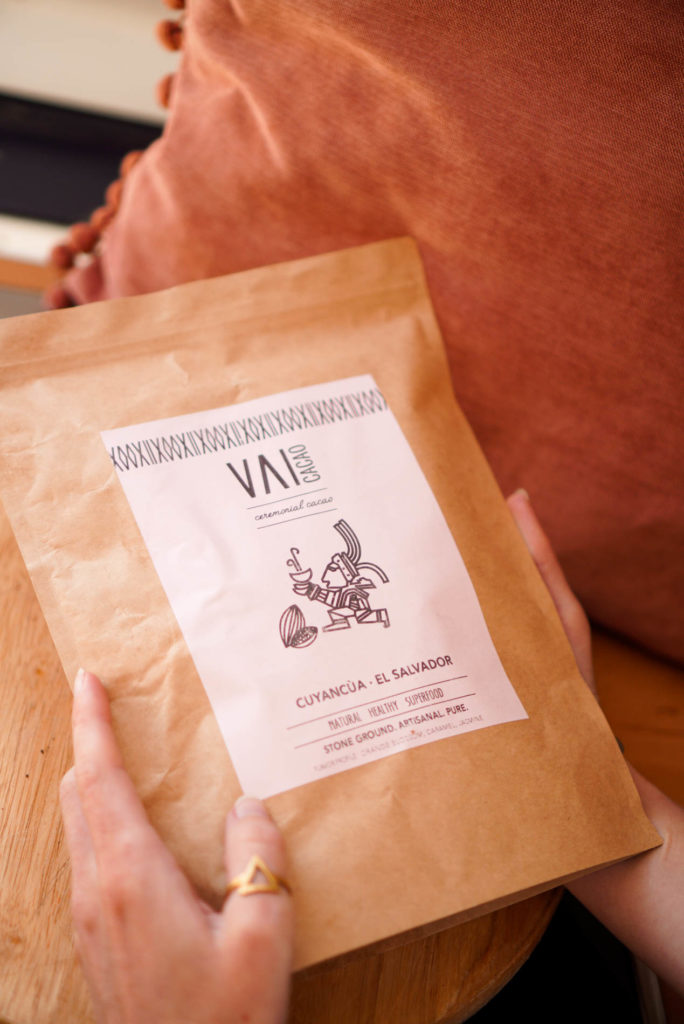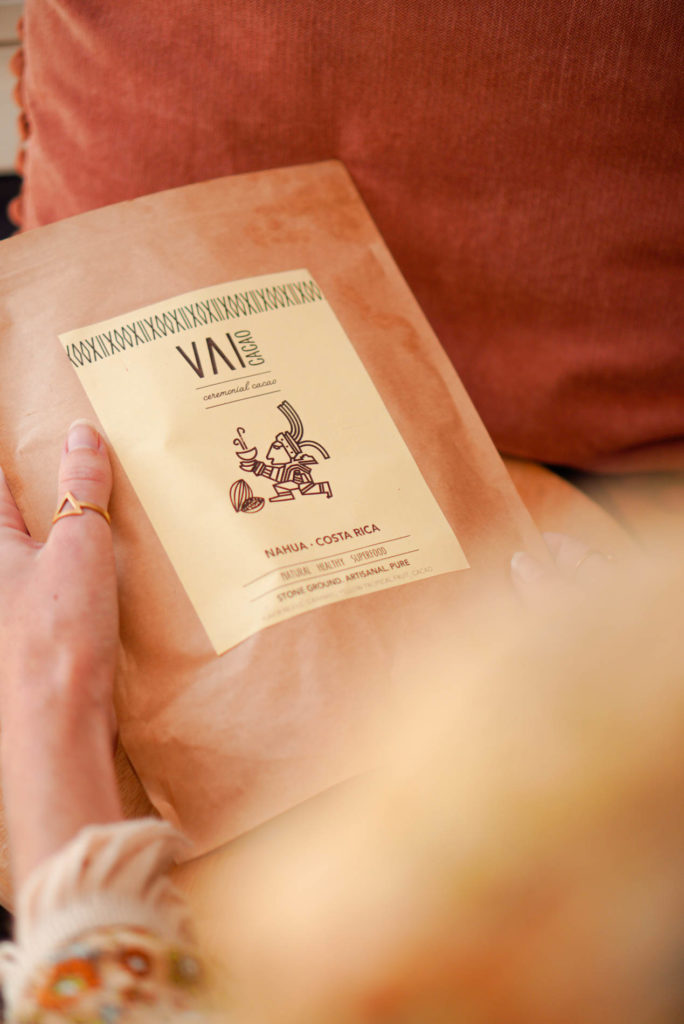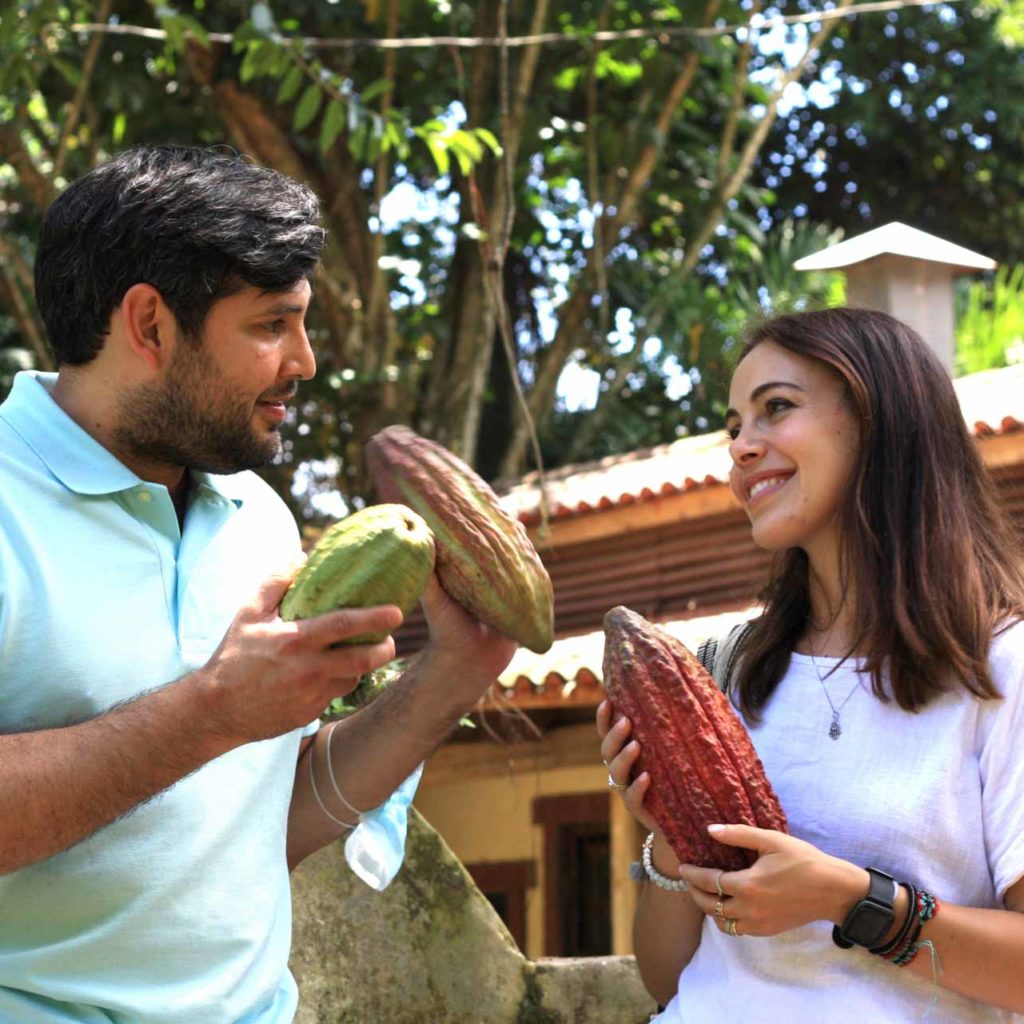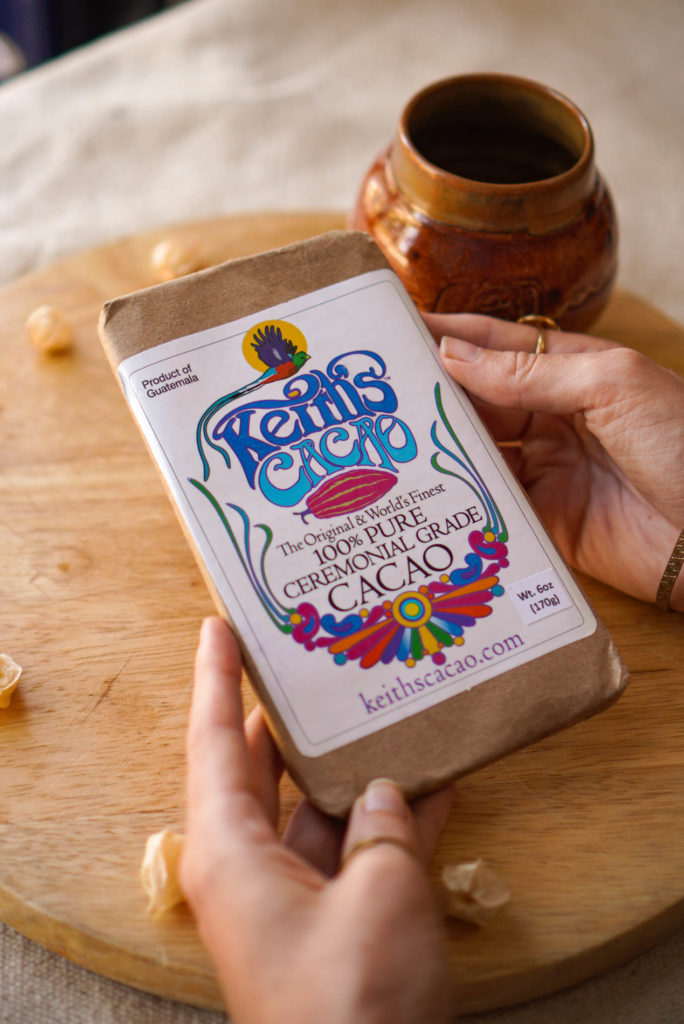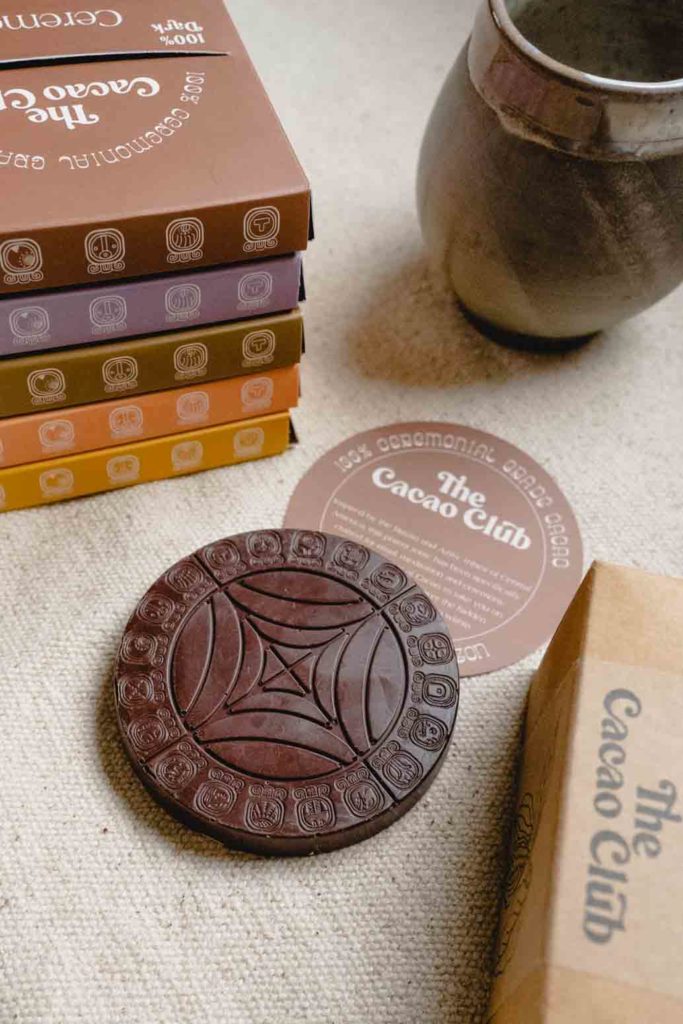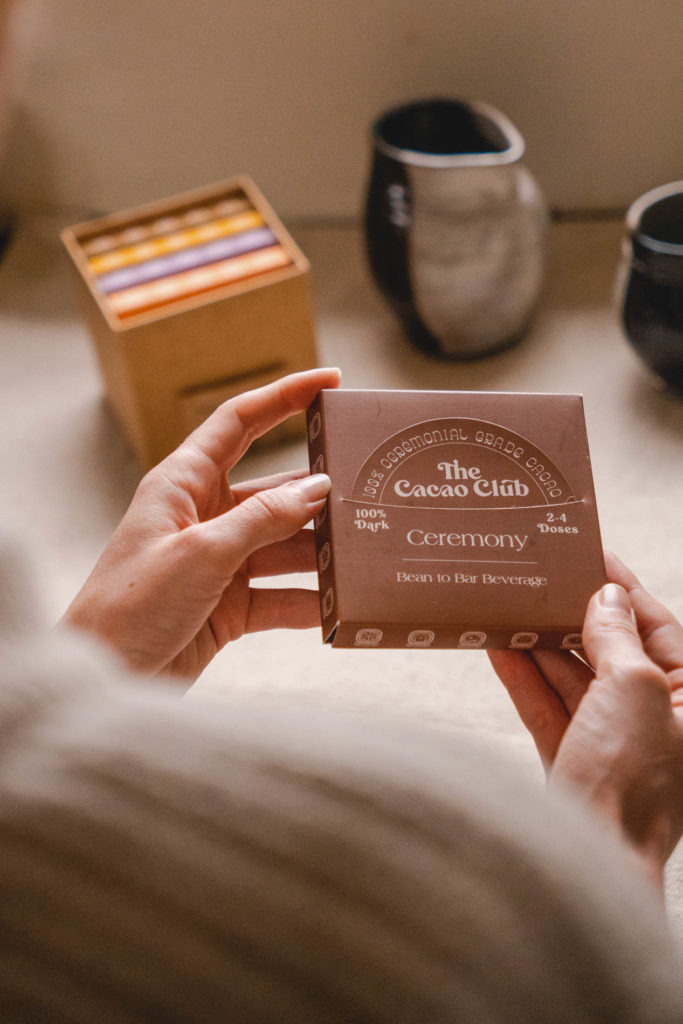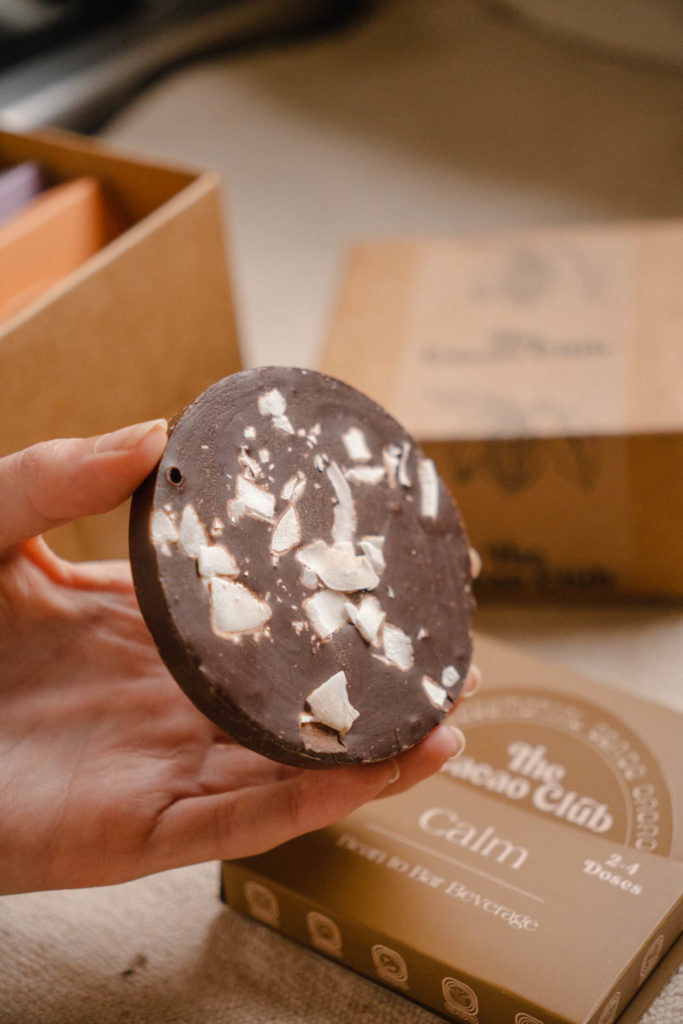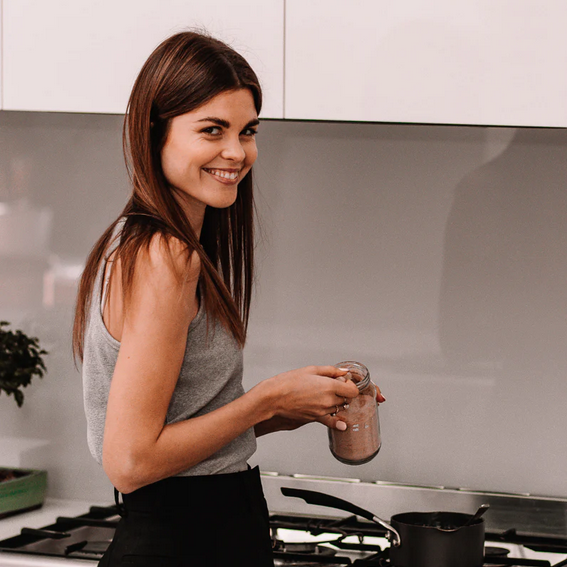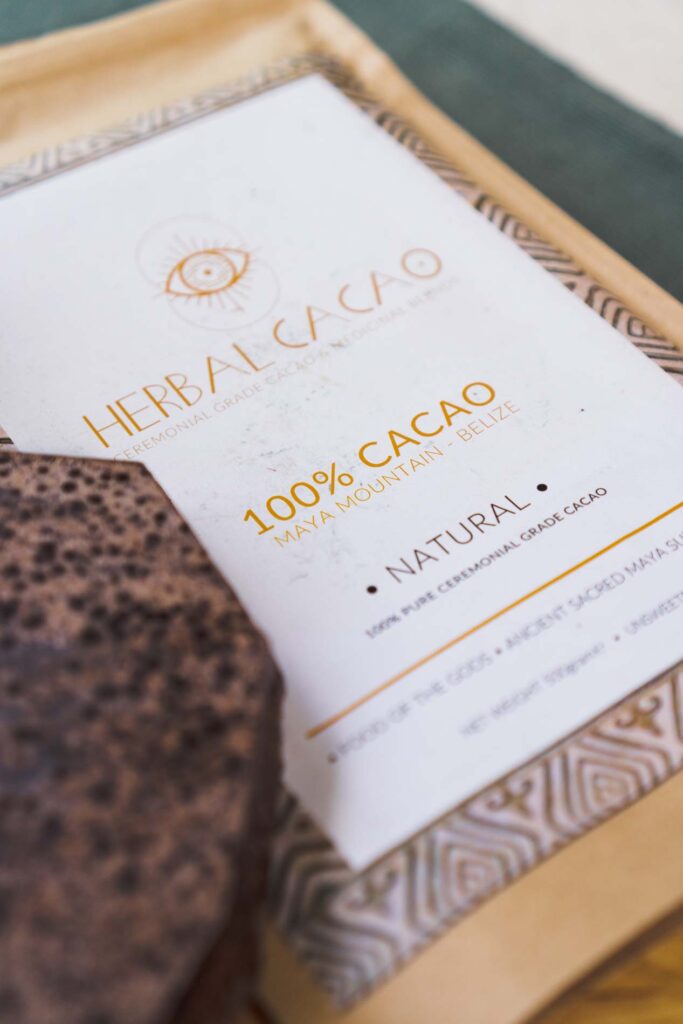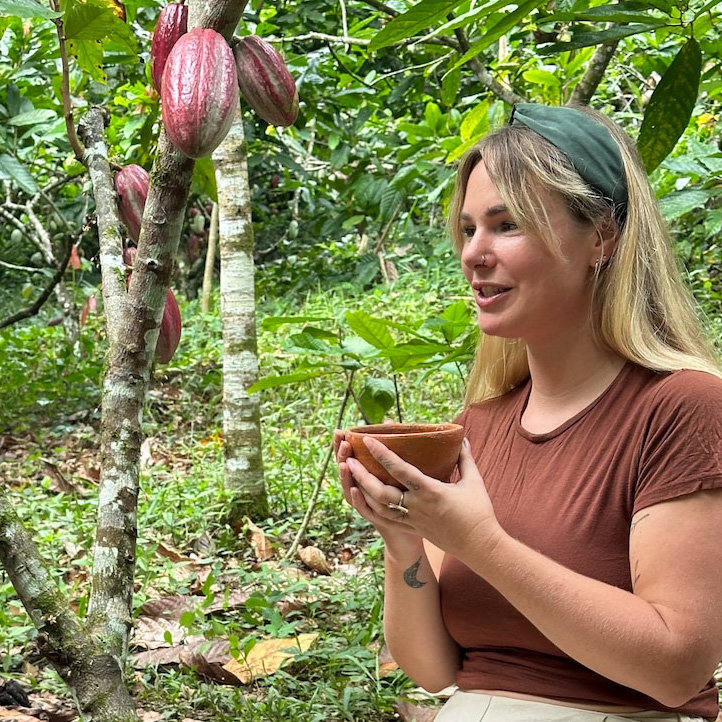What is the
Cacao Guide
all about?
— An experiment of various cacao brands, aiming at identifying the differences in taste and effects that ceremonial cacao has to offer.
Follow the making of our Cacao Guide and understand what makes each cacao unique. Benefit from in-depth profiling articles to get familiar with different ceremonial cacao origins and makers.
Our purpose: to bring you clarity over the variety of existing ceremonial cacaos — what are their characteristics and specificities.
Meet the people behind the brands and access some of their insights!
⎯⎯⎯⎯⎯⎯⎯⎯⎯⎯⎯⎯
Find your way
through the
Cacao Guide
Explore Ceremonial Cacao's Diversity
We’re creating this Cacao Guide to help you understand better the differences between cacao profiles, origins and brands offering it.
We try plenty of cacaos — in a fixed setting recreated for each tasting — in order to identify their nuances. Discover our tasting protocol at the bottom of this page.
Each brand is given its own series of articles : presentation – cacao experiment – interview.
In those, you’ll find objective elements (origin, terroir, aspect, vision of the brand…) and subjective ones (aromas, effects, our own experience…) .
This guide will constantly be updated so keep an eye on it!
— Based in Amsterdam, The Netherlands
” Their adventure started with Matagalpa, their Nicaraguan cacao, which they source directly from the farm since 2018.
Their success quickly allowed them to diversify their range, adding Alta Verapaz (Guatemala) in 2019 and Cusco (Peru) in 2021 to their rotation.
They maintain the same ethos for each of them: only single farms applying high quality standards and traditional inherited knowledge. “
— Based in Graton, California, USA
“Ora Cacao is then the first brand (and not the last) we encountered which takes care of processing cacao beans into pure paste. A bean-to-cup tunnel inspired from the bean-to-bar philosophy.
One big difference though is that a chocolate maker would generally process beans focusing on making the most of their aromas, without regard for preserving their active compounds.
And this is where Ora’s difference lies. A well balanced blend of fine chocolate-making mentality and ceremonial cacao awareness is a vibrant attempt at bringing out the best of both worlds!”
— Based in Olbia, Sardinia, Italy
“Everything starts from La Finca Cuyancùa, Juan-Ra’s family’s farm located in Izalco.
Originally focusing on coffee, Juan-Ra’s dad started to diversify to cacao in the early 2000’s while in the meantime creating a cooperative of cacao producers. This endeavor was then followed by the building of a post-harvest facility, ensuring all the freshly harvested beans from the cooperative high quality and consistent fermentation and drying practices.
A certainly fertile ground for Elisa and Juan-Ra’s ambition.
— Based in San Marcos De La Laguna, Guatemala
Acknowledging and respecting the traditions is a staple for Keith’s Cacao. They are established in the Kaqchikel Mayan community of San Marcos, and this isn’t just a privileged location.
As a matter of fact, they process and transform beans following the ancient wisdom and traditions that have been passed on through generations in the community.
Great care and knowledge from the community, coupled to native cacao varieties as well as rich « local hybrid » varieties is a recipe for success.
— Based in Melbourne, Australia
When The Cacao Club made its debut, Jordan was actively sharing her love and interest for cacao as a medicine, in the form of rituals and ceremonies.
Quite quickly, as the popularity of her events grew, she started crafting her own discs in her kitchen so people could bring them home and make a ritual of their own.
Since the making of her very first discs, her intention was to share and enhance cacao’s healing potential through the use of medicinal herbs, so one’d become its own healer.
— Based in Groningen, The Netherlands
Leaving her home country early on, Sharon spent a big part of her life abroad, getting from one corner of the world to the other.
On the way, she developed a deep interest for superfoods and nutrition, but it was only when her path took her to spend 3 full years in Mexico that she discovered cacao, the food that was once revered and cherished for its singular way of being nourishing on many layers.
She felt called to share with the world what she could grasp from this Mayan heritage, and to let everyone know that cacao might be one of the best ways to learn again how to connect with ourselves, with others, with nature.
Tasting Protocol
INGREDIENTS
100% water based drink → 25cl ± 2cl
100% pure cacao, ceremonial grade → 17gr ± 1gr
—
Water is heated to 85°C ± 5°C (stopped before boiling point)
SETUP
- During the morning, when we feel it’s the right time, on an empty belly
- Alone or the two of us together
- Act consciously from the first preparation step onward, with a dedicated time and space
- Calm environment, no distractions
- Be aware of what comes up for at least 1h
- Observe what happens, how we feel, what we want to do
We’re certified level 1 in “Chocolate Tasting” from the IICCT.
©2024 Cacao Insights ☼ Made from the ♡
